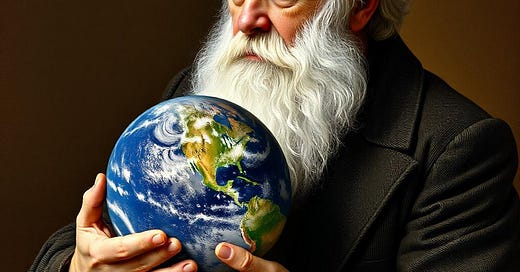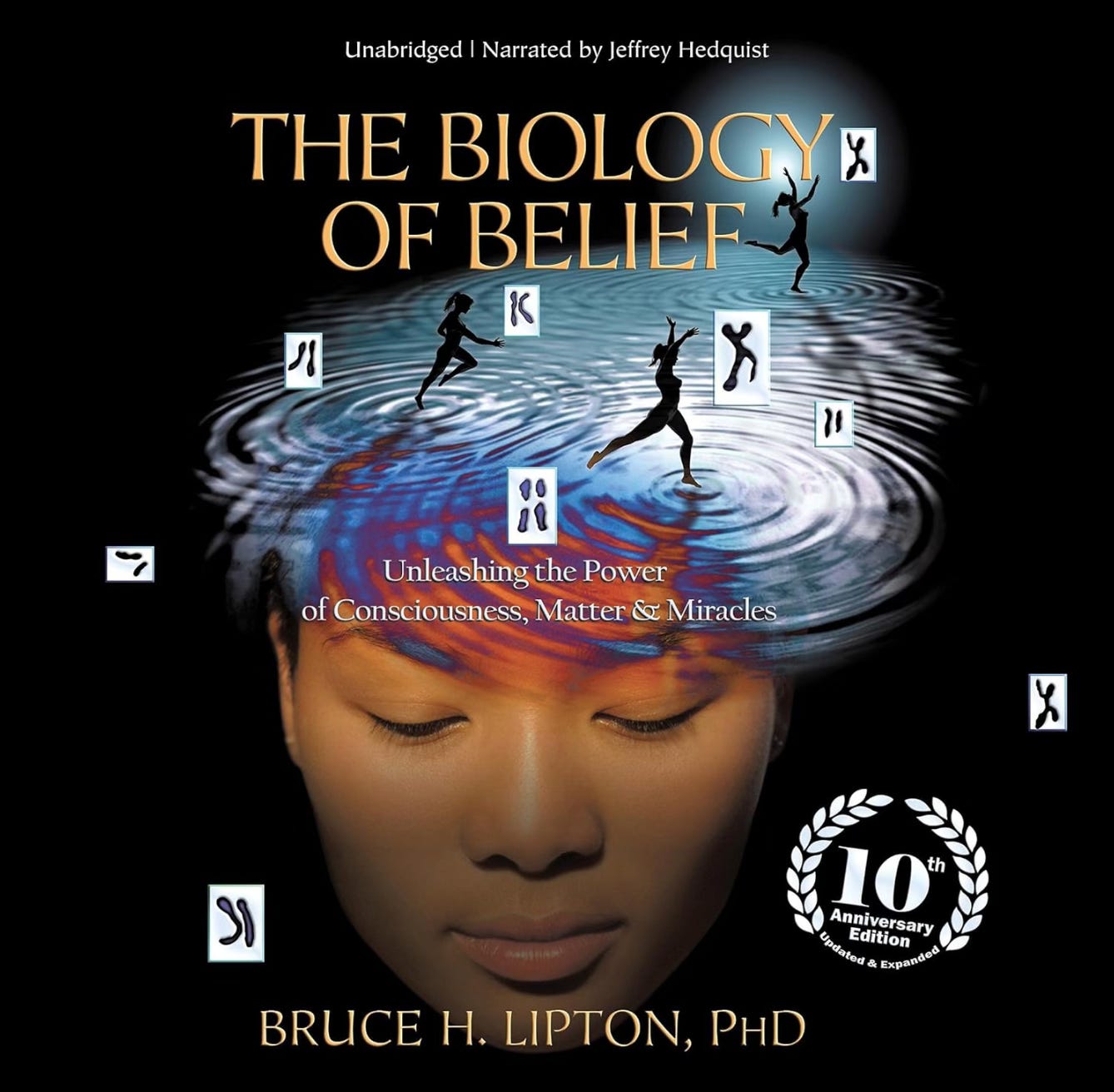The Galapagos Islands, where Charles Darwin observed finches and laid the groundwork for his theory of evolution, remain a potent symbol of the natural world's competitive nature. Yet, as humanity grapples with climate change, resource depletion, and social inequality, a growing number of scientists are questioning whether the "survival of the fittest" narrative tells the whole story.
These voices suggest that cooperation, consciousness, and a more holistic understanding of life as a self-organizing system are not just desirable ideals but essential drivers of evolution, particularly as humanity navigates a precarious future.
Leading this charge are two figures whose work I profile in my book Second Sapiens: Bruce Lipton, PhD. a cell biologist whose work in epigenetics has challenged long-held assumptions about the primacy of genes, and Elisabet Sahtouris, a systems theorist who views Earth itself as a living organism, a concept known as Gaia.
Lipton argues that the world has been operating under a Darwinian framework that emphasizes competition, which has led us down this dangerous path. In his book The Biology of Belief, he argues that the relentless pursuit of individual gain, fueled by a misinterpretation of natural selection, has contributed to our current environmental and social crises.
The Cell as a Conscious Entity
Lipton's research has focused on the inner workings of cells, the fundamental building blocks of life. He posits that the cell membrane, the outer layer that interacts with the environment, is not just a passive barrier but rather the "brain" of the cell. The membrane, Lipton believes, acts as an interface, constantly receiving and processing information from the environment, and this information then dictates the cell's behavior, overriding the genetic blueprint in many cases. His views, which I consider part of the sciences of the highest stage of human development known to us (stage eight), challenge the traditional scientific view that genes are the sole determinants of an organism's fate. Traditional science is driven by the Newtonian method, which is proprietary to the fifth stage of human development. At its core, its scientific tools view cell biology as deterministic and non-evolutionary in nature. Lipton’s work is part of the emerging sciences that place greater emphasis on the role of environmental factors and, crucially, the organism's response to them.
This perspective echoes the ideas of Jean-Baptiste Lamarck, a pre-Darwinian naturalist who proposed that organisms could acquire traits during their lifetime and pass them on to their offspring. While Lamarck's theories were largely dismissed for decades, the field of epigenetics, which studies how environmental factors can alter gene expression without changing the underlying DNA sequence, has breathed new life into this area of study known today as evolutionary biology. This double-helix conception of how the organism interacts with its environment has been at the core of how life emerged billions of years ago and it will remain the driver of our future. Yet, our scientific mind is just beginning to understand it.
Gaia's Dance: A Planet in Symbiosis
While Lipton delves into the micro-world of cells, Elisabet Sahtouris takes a wider view, embracing the Gaia hypothesis, which posits that Earth functions as a self-regulating living system. "Everything is interconnected," she says. "Evolution is not just about competition; it's about cooperation, symbiosis, and the creation of mutually beneficial relationships."
She argues that the competitive phase of evolution, characterized by dominance hierarchies and resource exploitation, is a necessary but unsustainable stage. She points to examples of symbiotic relationships in nature, such as the mutually beneficial partnerships between plants and fungi, as evidence of the power of cooperation in driving evolutionary progress. She frames human evolution within the context of Gaia's larger dance of life suggesting that humanity is still a young species learning to balance its own dance within the planet's rhythms. The principles of the natural world, Sahtouris argues is knowing how to shift from a competitive mindset towards cooperation and that becomes the key to solving global challenges and creating a sustainable future for humanity and the planet.
From Caterpillar to Butterfly: A Metaphor for Transformation
Both Lipton and Sahtouris see humanity as being at a critical juncture, a point where the species must choose between continuing down a path of unsustainable consumption or embracing a more cooperative and conscious way of life.
Lipton compares today’s humanity to a caterpillar that has been consuming resources at an unsustainable rate, and it's rapidly approaching a tipping point where it must face the consequences. There is no better comparison from evolutionary biology than this to how we’ve been consuming Earth’s resources over the last century. The various tipping points are present in the different planetary systems that have moved passed the safe boundaries that ensure the continuity of life. All life.
Lipton uses the metamorphosis of a caterpillar into a butterfly as a powerful metaphor for this transformation. The caterpillar, driven by an insatiable appetite, eventually depletes its resources and faces a crisis. But within the chaos of its demise, specialized cells emerge to guide the transformation into a butterfly, a creature that sustains itself through a more balanced relationship with its environment. We must learn quickly how to enable our own metamorphosis and become the butterfly. In my work with stage development, those specialized cells that give birth to the butterfly are termed as the Second Sapiens brain syndicate possessing greater degrees of psychosocial freedom that enables us to think in planetary terms. They are the highly collaborative and synergistic systems thinkers we need to balance our long fraught relationship with our environment.
The Superorganism: A Collective of Conscious Minds
Central to this vision of the Second Sapiens brain syndicate, is the concept of the superorganism, a group of highly specialized individual organisms that function together as a single, unified entity. Examples in nature include ant colonies, beehives, and even the human body itself, where individual cells cooperate to maintain the health and function of the whole.
Lipton and Sahtouris suggest that humanity is on the verge of becoming that superorganism, a global collective of conscious minds working together to solve global challenges and create a more sustainable future. It is the monumental shift from a perspective that sees intelligence concentrated in the individual mind to one that sees it distributed to all of humanity. It is the neurosphere that contains the intelligence of all life where human intelligence, the way we have known it, is but a small part. This transformation, however, requires a fundamental shift in understanding our species and its relationship to the natural world.
The path to becoming a superorganism is fraught with challenges. The Second Sapiens, endowed with exponentially higher brain capacities, must overcome the ingrained patterns that defined his younger kin, the First Sapiens who is still driven by competition, greed, and short-sightedness. This monumental change will require a concerted effort on the part of individuals, communities, and institutions that are populated mostly by Fist Sapiens, making it prohibitively difficult to achieve. But it must be done, and the potential rewards are immense.
In Sahtouris’ words: "Humanity has the capacity to create a world where everyone thrives, where resources are shared equitably, and where humans live in harmony with the planet, but this requires a shift in consciousness, a recognition of interconnection, and a willingness to cooperate." It is this cooperation and our conscious will that will drive the next stage of humanity’s evolution. It is indeed the only thing that will save us from ourselves.






